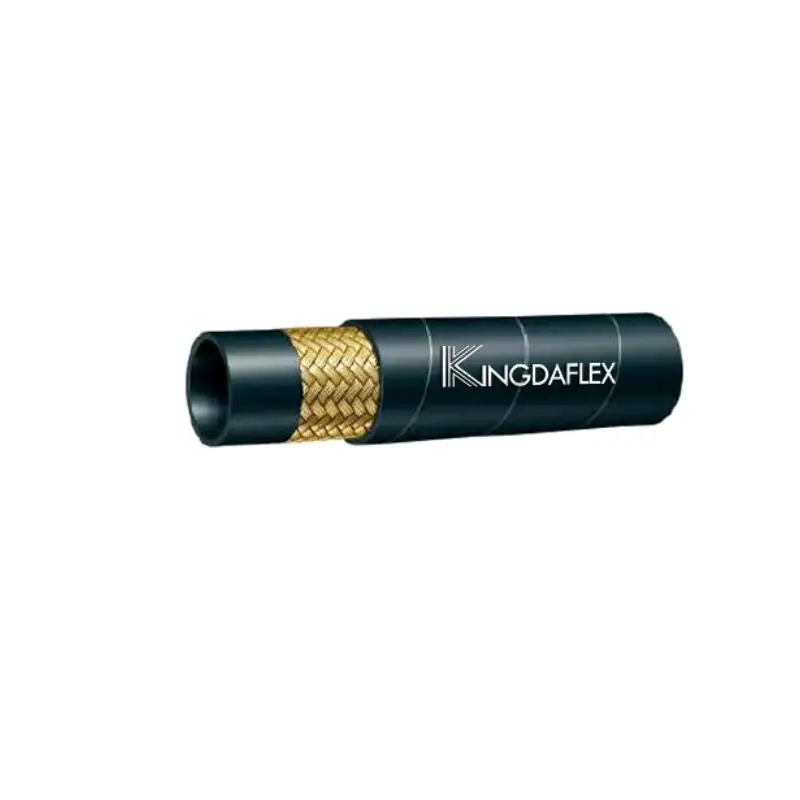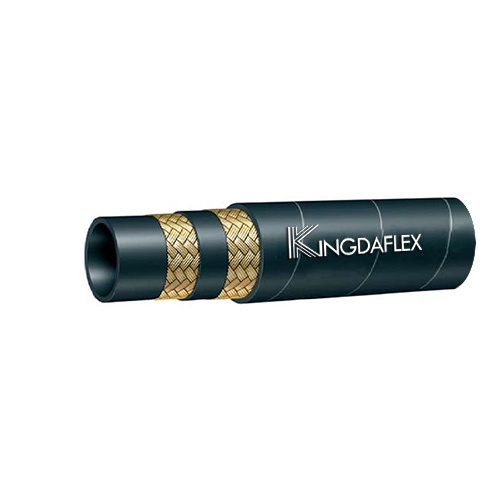We offer a comprehensive range of 1SN hydraulic hoses. These hydraulic hoses 1SN , conforming to the EN853 1SN and SAE 100R1AT standards, feature a single high-tensile steel wire braid reinforcement, making them ideal for medium-pressure hydraulic applications. We guarantee durability, flexibility, and reliable performance across various industrial, agricultural, and mobile equipment needs.
We meticulously construct 1SN hydraulic hoses with a single layer of high-tensile steel wire braid. This robust reinforcement provides the necessary strength to withstand medium-pressure hydraulic applications while maintaining essential flexibility. We ensure this design offers a reliable balance between pressure capability and ease of installation.
Due to their single-braid construction, we find 1SN hoses to be highly flexible, allowing for easier routing and installation in confined spaces. This characteristic reduces the effort required during assembly and minimizes the risk of kinking. We appreciate their adaptability for various equipment layouts.
We specifically recommend 1SN hoses for a wide range of medium-pressure hydraulic systems. They are ideally suited for return lines, pilot lines, and general industrial hydraulics where continuous high pressures aren’t the primary concern. We ensure our 1SN hoses perform consistently in these demanding environments.
We supply 1SN hydraulic hoses across diverse sectors, including agriculture, construction machinery, and general industrial equipment. Their balanced combination of pressure resistance and flexibility makes them a cost-effective and reliable choice for a multitude of hydraulic power transfer needs. We pride ourselves on their broad applicability.

Inner Tube: This high-quality synthetic rubber layer forms a seamless, leak-proof conduit. It’s formulated for resistance to specific hydraulic fluids, preventing chemical degradation and ensuring fluid purity, crucial for system longevity.
Reinforcement: A single layer of high-tensile steel wire braid encircles the inner tube. This defining feature of 1SN hoses provides essential strength to withstand internal hydraulic pressure, balancing capability with flexibility.
Outer Cover: The durable synthetic rubber outer layer protects the hose from external elements. It resists abrasion, weather, and oils, safeguarding the inner layers from physical damage and degradation, extending the hose’s service life.

Reinforcement: Features a single layer of high-tensile steel wire braid.
Pressure Rating: Designed for medium-pressure applications. It has a lower maximum working pressure compared to 2SN.
Flexibility: Generally more flexible due to fewer reinforcement layers, making it easier to route in tight spaces.
Weight: Lighter in weight than 2SN hoses of comparable size.
Cost: Typically more cost-effective to produce and purchase.
Applications: Ideal for general industrial hydraulics, agricultural machinery, return lines, and pilot lines where moderate pressure and good flexibility are required.

Reinforcement: Features two layers of high-tensile steel wire braid.
Pressure Rating: Designed for high-pressure applications. It can withstand significantly higher working pressures than 1SN.
Flexibility: Less flexible than 1SN hoses due to the additional reinforcement layer. This results in a larger minimum bend radius.
Weight: Heavier than 1SN hoses due to the extra steel wire.
Cost: Generally more expensive due to the increased material and manufacturing complexity.
Applications: Suited for demanding applications in heavy construction equipment, mining machinery, high-pressure lines, and systems requiring superior durability and higher impulse resistance.
Reinforcement: Similar to SN/SC, but the “K” often denotes a further optimized or compact version beyond the standard SC. It usually indicates steel wire reinforcement.
Outer Diameter: May offer an even smaller outer diameter or a more efficient use of materials for its pressure rating than standard SC hoses.
Bend Radius: Often designed for an even greater reduction in bend radius while maintaining pressure capabilities.
Applications: Used in extremely tight spaces or in applications demanding maximum flexibility and minimum footprint, sometimes exceeding EN 857 SC standards.
Cost: Can be at the higher end of the price spectrum due to advanced design and materials. It’s often a proprietary designation, so specifications should be checked with the specific manufacturer (e.g., Semperit’s 1SNK/2SNK).